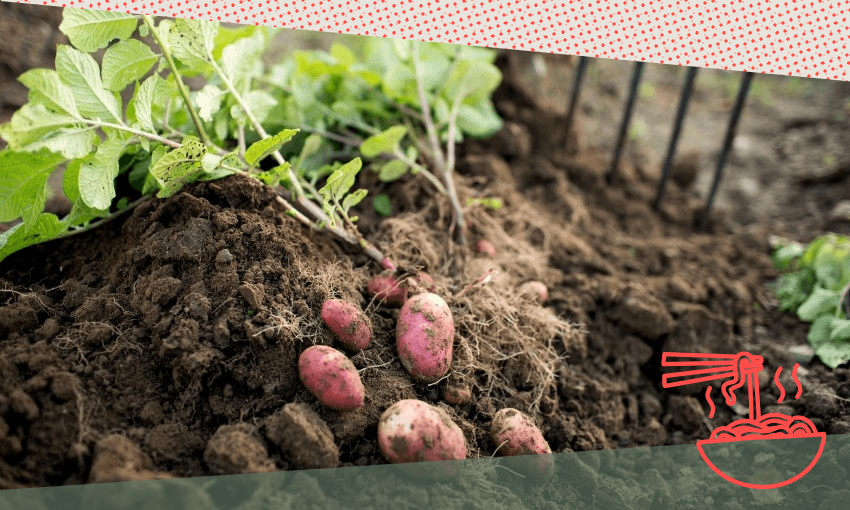Lucinda Bennet reflects on appreciating vegetables and learning through doing.
This is an excerpt from our food newsletter, The Boil Up.
When you pull a carrot from the ground, there’s a certain sound it makes, a kind of “pop” as the tip detaches from the root cap. It’s something you can only know if you’ve harvested carrots yourself, something I did a few times in September while volunteering at Kelmarna Community Farm. Sometimes, a carrot wouldn’t pop, wouldn’t want to leave the earth at all and would snap in half, revealing the shock of orange at its centre and a whiff of the most potent carrot scent imaginable, sweet and grassy like spring itself.
After just a few days harvesting and washing carrots, I gained a new appreciation for the ones I was eating. I marvelled at their different shapes and sizes, at the differing sweetness between the inner core and outer cortex. Actually, since I started volunteering at Kelmarna, taking part in growing kai from seed to harvest, my appreciation for every vegetable I eat has deepened. Did you know it takes around four months to grow a full size cabbage? Just shy of half the time it takes to grow a baby. About the same length as the average gestation for a pig. A cabbage is a precious thing; every vegetable is a miracle.
Around the same time I was pulling carrots, research was published in the UK revealing that less than a third of primary school-age children were able to identify common vegetables. Naturally, I wondered how our tamariki here in Aotearoa might fare in such a study. While the presence and growth of school gardens, outdoor classrooms and food education programmes is heartening, enormous budget cuts to programmes like Ka Ora, Ka Ako could see the demise of many incredible initiatives designed by schools to serve the specific needs of their ākonga, like this sustainable, tuakana/teina model at Te Pā o Rākaihautū, or the low-waste scheme at Portland School where lunch is taking a central role in their current whole-school inquiry into where kai comes from.
Where does kai come from? Well, there’s the garden, the farm, the river, the sea; but it’s not so simple as that in an age of globalisation, imports and exports, kai grown in labs, kai that barely resembles kai at all. In the most recent episode of Home Education, we meet the Baker whānau who live and learn on their farm in Hiruhārama, Tairāwhiti. Watching this whānau work together in the māra, mustering horses, tamariki learning to arrange kūmara tubers in a barrel like “a school of fish,” I think about how it might feel to grow up knowing where the kai on your plate comes from, because you planted, grew and harvested it. I know this isn’t revolutionary stuff, but for a city kid whose kūmara has always come from the supermarket, it kind of is, especially with many studies showing that kids – and adults – who grow their own fruit and vegetables are more likely to eat them.
Early in the episode, Israel Baker explains how his kids began learning from home after a whale washed up on Tokomaru Bay and they pulled the kids out of school for a few weeks to learn the traditional Māori practices around whale flensing, harvesting taonga from the tohorā. When truancy officers came knocking, they decided to keep the kids at home, recognising the significance of what they could learn through hands-on experiences on the land and by the sea. While this kind of education might not be possible for every whānau, it does seem that there is something – many things – we can learn from the Bakers, perhaps about seeing the educational value inherent in tasks connected to sustaining life, in tamariki never becoming so alienated from Te Taiao in the first place that they do not know the sound a carrot makes when it is pulled from the earth.

